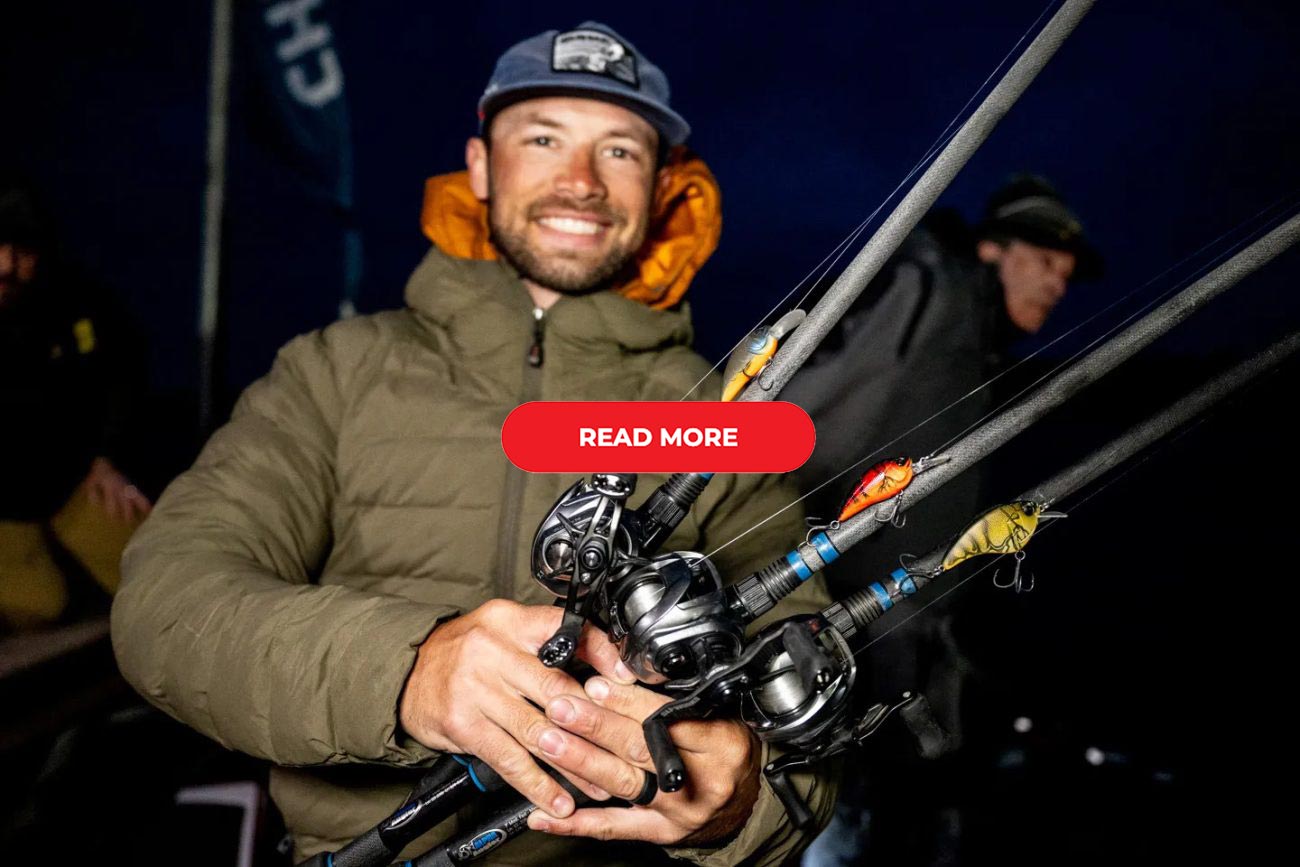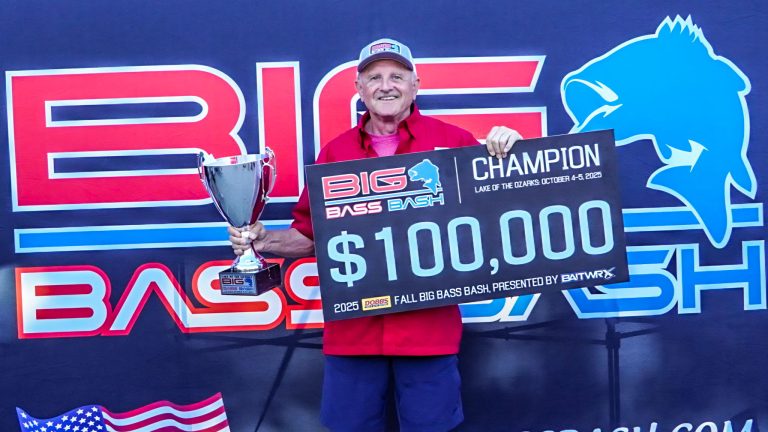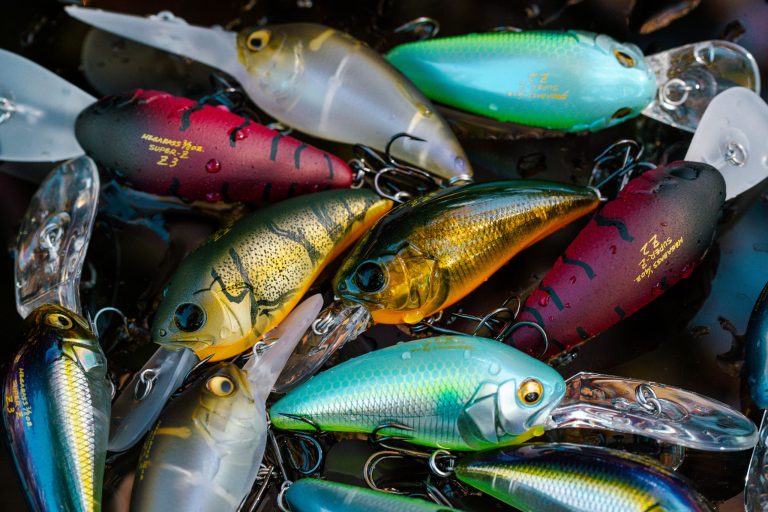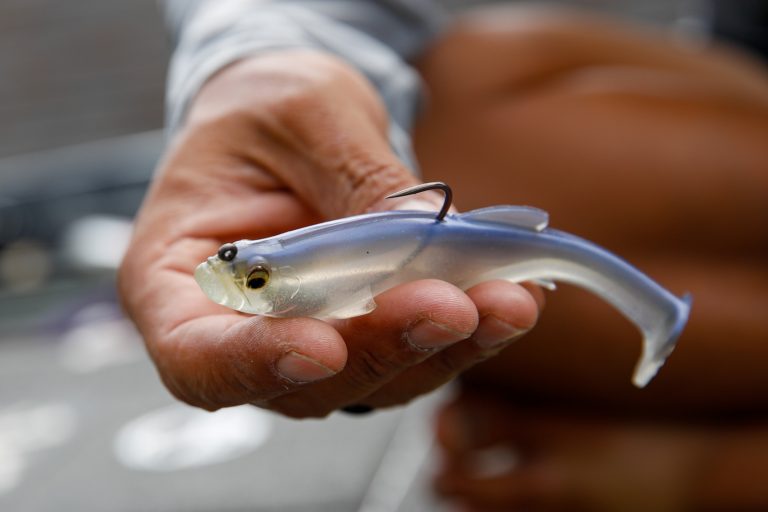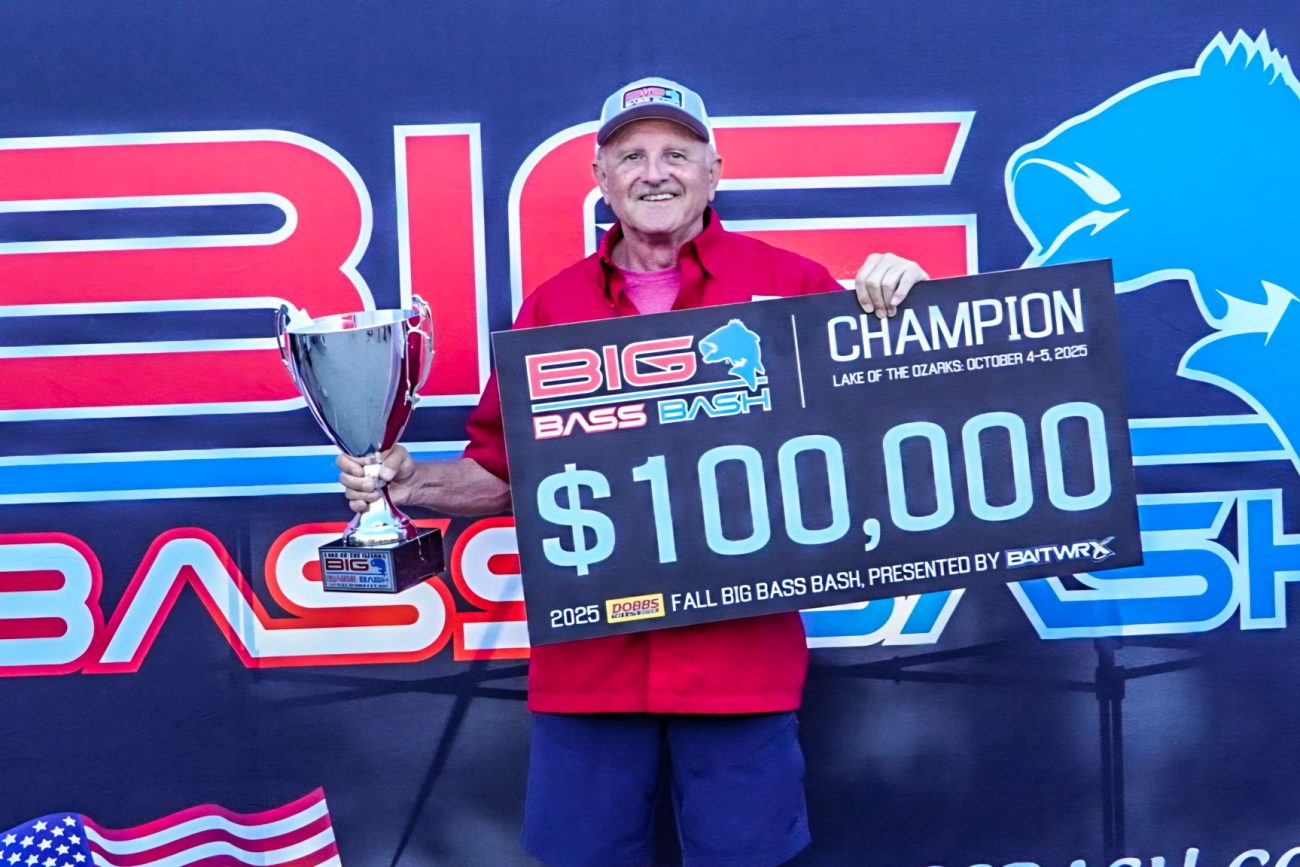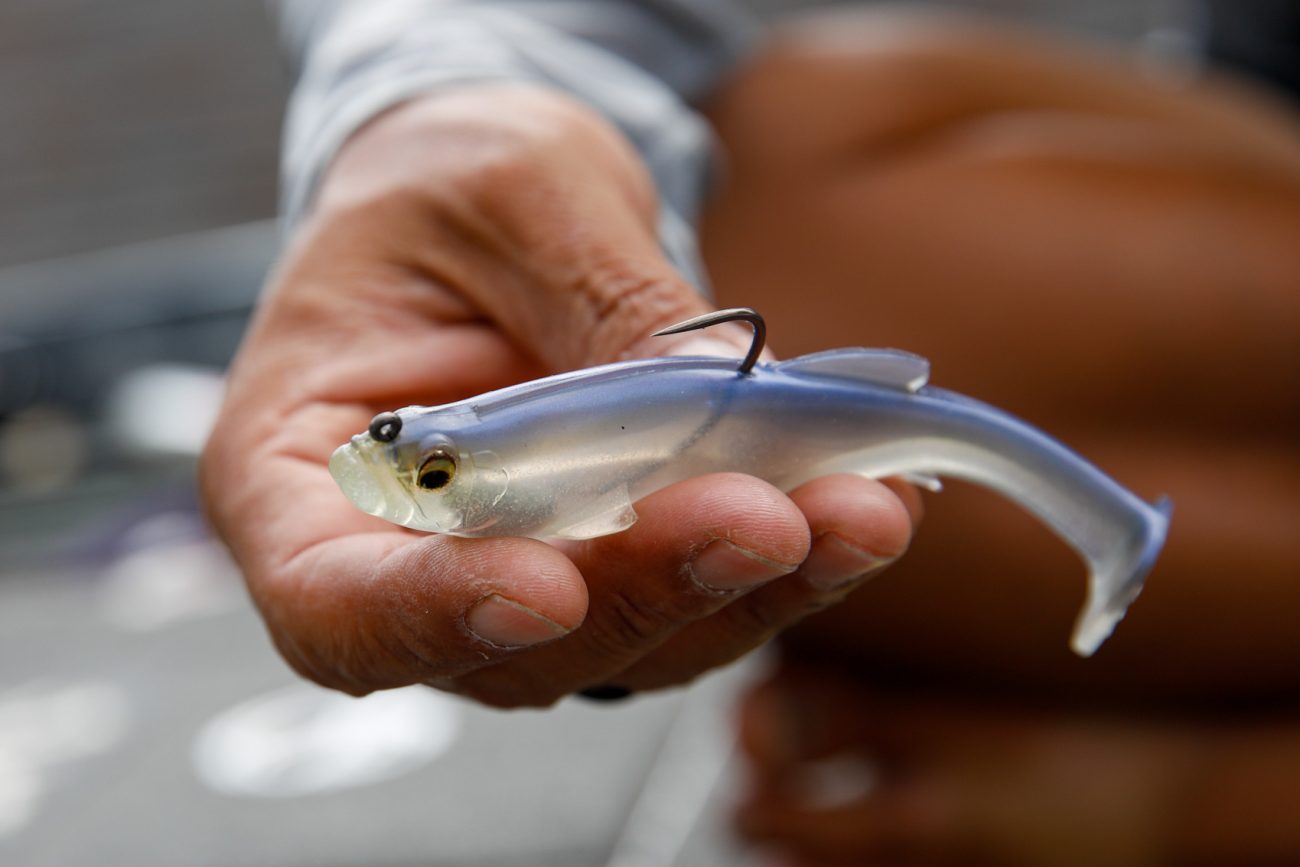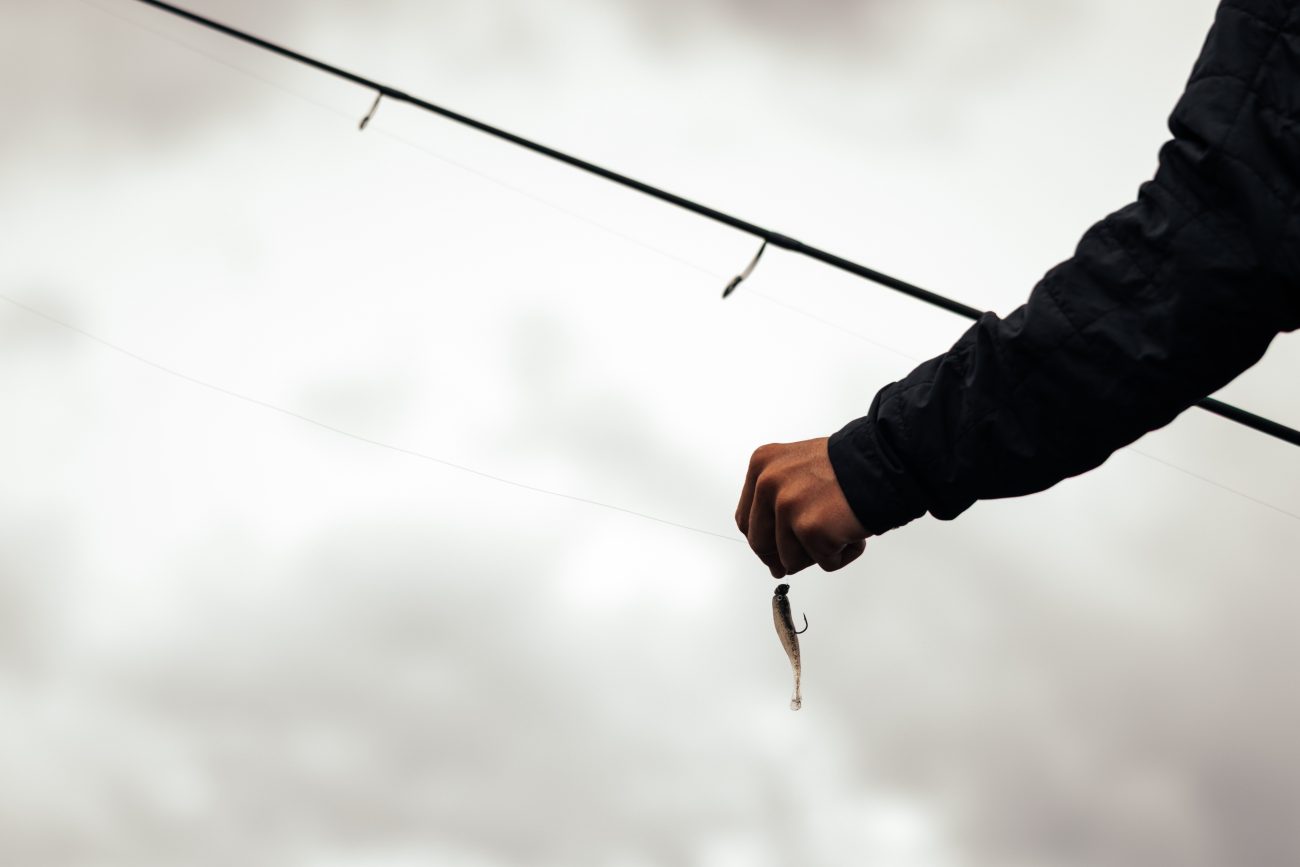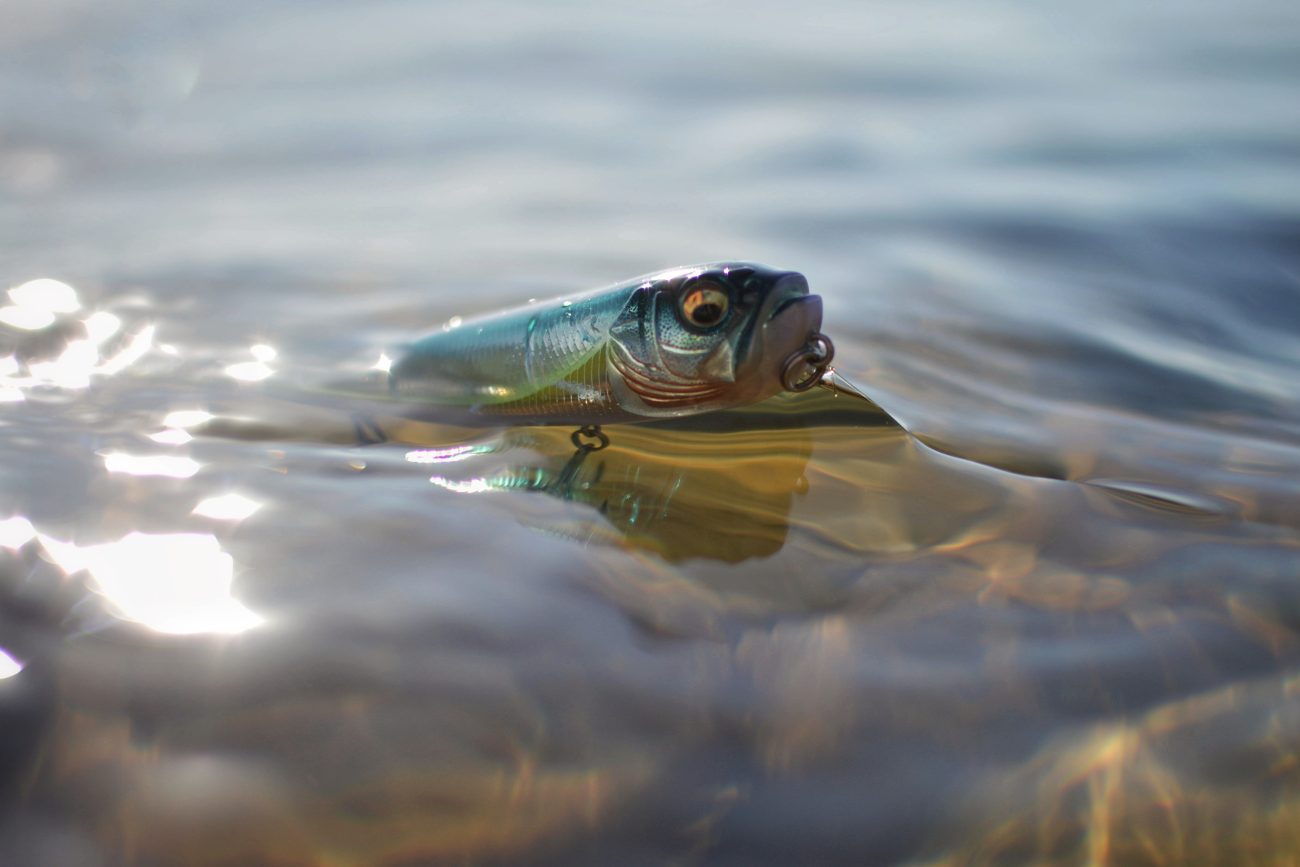The hallmarks of Brandon Palaniuk’s tournament fishing career have been an ability to out fish others in difficult conditions and a willingness to consider presentations outside of the norm. He combined both of those advantages at Florida’s Lake Okeechobee in March to win by nearly 16 pounds over his closest competitor. To understand what enabled such a dominant finish, we have to start with his top-ten finish in 2023 at South Carolina’s Santee Cooper.
“A lot of those fish were in a funky, weird mood,” he said of his South Carolina win. “I knew I was around a lot of big fish, but I wasn’t getting a ton of bites. They’d react to a swimbait, but I couldn’t hook them. They’d follow it or hit at the boat and miss. I needed something with a large profile, but erratic enough to trigger them, so I picked up a Megabass Kanata and quickly got some of the biggest bites of the tournament. This was a very similar situation.”
The way that he built his game plan provides a road map for anglers around the country, even those who may never visit Okeechobee. He recognized that the fish were finicky, that conditions were changing, and that the bass wanted to be shallow to spawn, but hadn’t fully made the transition.
“As they progress toward the spawn, you want things to be as stable as possible,” he said. “The factors that you consider depend heavily on of the type of water you’re fishing. On large waters like Okeechobee or the Great Lakes, wind might be the biggest factor. On rivers, it might be more about water levels and current. I want to find the places that are most stable and least affected by the conditions.”
On Okeechobee, water levels were low and vegetation was scarce, taking much of the main lake out of play. Palaniuk admitted to having a difficult practice but ultimately succeeded in identifying a key area that enabled a dominant close-quarters win.
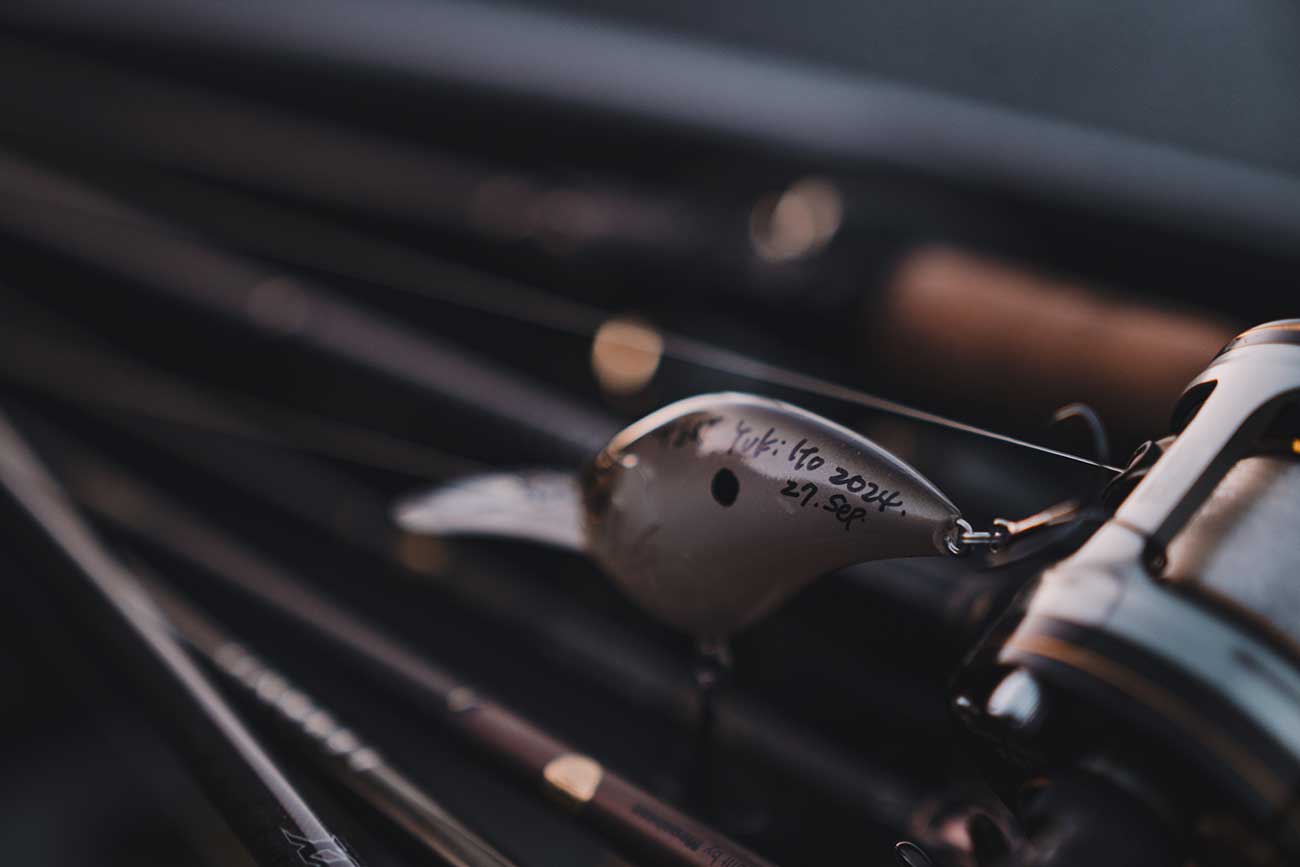
Finding the Spot
All week, Palaniuk concentrated on a small stretch of the C-41A Canal, which flows southeast from Lake Istokpoga. His primary area featured consistent current, a submerged ridge with a deep trench running between the high spot and the riprap-lined bank. This combination of structure and depth created a natural funnel where fish could move through and replenish the area each day.
The setup was ideal, with deep water positioned near key spawning grounds, allowing bass to transition seamlessly. At the back of the trench, a shallow flat extended from the bank, providing a perfect spot for large female bass to warm up in the sun. The presence of abundant baitfish made it an even more attractive feeding zone, drawing in quality fish consistently.
Why did he pick that spot? Again, it’s a lesson in stability.
“Looking ahead, we were going to have different wind directions and changing temperatures,” he said. “The water there started off pretty clean and there was not enough space for the wind to dirty up the water. It was going to be the least affected place of what I’d found.”
Furthermore, once he’d determined there were quality fish there, he knew that the spot was “special” because it offered them everything that they might need in close proximity. “It had larger than average fish, but I thought that the circle in which they lived their life was not that big. They had ample spawning ground with good, clean stable bottom along with stable water clarity. There was also an ample food source and close proximity to deep water.”
Standing Out from the Crowd
Different Crankbaits for Different Purposes
On the last afternoon of practice, Palaniuk pulled into the canal and fired two casts with a prototype Megabass IPX crankbait and got two bites – a 2-pounder and a 6-pounder, which cemented his choice to start there on Day One. Unfortunately, when he arrived on the morning of the first day of competition, three competitors were already there.
“That’s when the adjustments started,” Palaniuk said. Indeed, while he was using his forward facing sonar to locate the fish and gauge their interest, he bucked the normal trend to downsize and fish a jig and minnow.
“The key moment was when some fish came up busting on the surface,” he explained. “it was the only time we saw it all week, and it didn’t last, but they looked like killer whales chasing seals. There was massive bait and some of the biggest fish I’ve ever seen chasing. None of us caught them, but that triggered something in me. That’s when I dug the Big-M 4.0’s out. That’s when I dug the Kanata’s out.”
The fact that he hadn’t fully explored the area in practice and was sharing a 50 yard stretch with three other competitors forced him to develop a differentiated plan of attack as the tournament evolved.
While Palaniuk used his Humminbird forward-facing sonar to understand the lay of the land, he avoided the finesse jighead minnow approach entirely. What he used his electronics for most was to understand fish behavior and to inform his lure choices.
“The fish would position differently throughout the day,” he said. “New groups of fish would show up and I’d see them on Mega Live 2. It all depended on whether they were close to the bottom or higher in the water column.”
“When groups of pre-spawners would show up, they’d be traveling in packs of three to five fish,” he continued. “But they’d never sit in one place. They were constantly hunting, moving up and down in the water column. That’s when the crankbait really played. It allowed me to fish in the places the fish were hunting in, making repetitive casts to trigger bites. A lot of times it was a reaction bite, fast reeling, then stop and go. I was constantly changing up retrieves, every five or six casts or so.”
As the tournament developed, and the fish got more pressured, Palaniuk got a better sense of which lure was most likely to trigger fish, based on what he’d see on his graph.
The Big-M 4.0, in particular, owned a specific niche that few other tools could match. Obviously, because of its size, it can be cast exceptionally long distances, and therefore it stays down in the strike zone for an exceptionally long time. But it’s not just a big presence. Indeed, one of the hidden secrets of this 2-ounce monster is its finesse attitude.
“It has a really fluid swimming action with a lot of flash and roll,” Palaniuk explained. “You don’t really get that in a lot of big baits. It makes it less intrusive, which is key when it’s calm or there’s just a tiny ripple on the water. In those situations, it’s possible to be too obnoxious and turn off bites when you have a big profile combined with big action.”
He used it primarily when the fish were on top of the lip dropping off into deeper water. The fish were feeding on big prey, but they were also “smart and a little bit wary. That subtle roll and flash is what did it better than a crazy hard wobbling crank would. In tannic water, that flash aids in them finding the lure.”
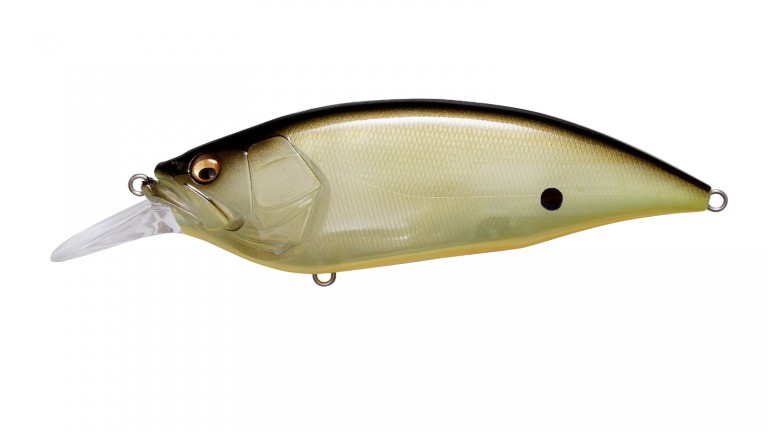
When the bass were relating more to the drop, he tended to lean on the prototype IPX crankbait. With a steeper dive angle, smaller profile, and that traditional hard-hitting wobble, the IPX allowed him to quickly change the tone of his presentation and maintain bottom contact as the lure came over the ledge. Again, castability was key, not just because it allowed him to sneak up on the fish, but also because it gave him more time to gauge their attitude on forward facing sonar as they tracked it.
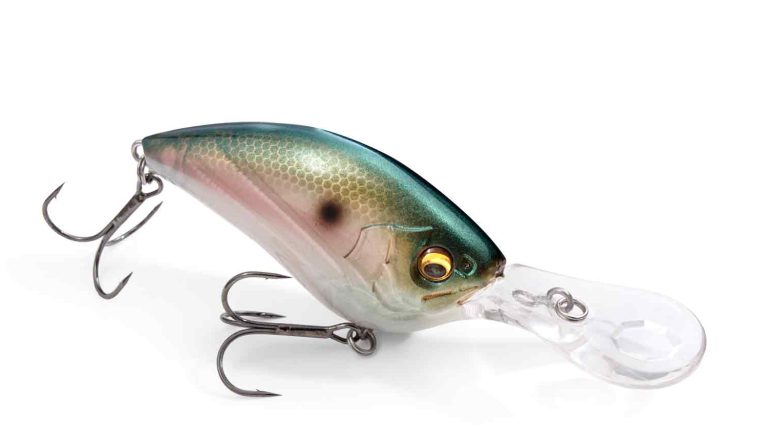
“Every once in a while you would see one chasing the crankbait,” he said. “It’s kind of like a cat and mouse game when they get in that mode and the long casts gave me more room to change cadences and try to trigger the bite.”
Throughout the course of the four competition days, he wasn’t able to pin down when the fish were most likely to be triggered – whether on the “stop” or on the “go” after stopping – but noted that “erratic speeds were what was triggering them, even if it changed fish to fish.”
One notable bass – the one that ended up hooking him in the face – bit right under the trolling motor as the lure broke off the ledge.
“I was popping the rod almost like stroking a jig,” he recalled. “It was trying to dive, but the line was pulling up at the same time. It was almost like a teeter-totter or a bull bucking. I don’t think that fish would have hit otherwise.”
Kanata Jerkbait Strategies
At Santee Cooper, Palaniuk discovered that the Kanata had similar drawing power to other big lures and glides he was throwing, but that the erratic action of the jerkbait was the difference-maker, triggering them to eat when they were otherwise only mildly interested.
“Now any time fish are feeding on big bait I have the Kanata tied on,” he explained. “It has a high level of flash, plus it’s pretty loud, so it creates a lot of drawing power. It’s also easier to change speed than with a crankbait. When you stop it, the crankbait wants to float up, but if you weight a Kanata to suspend it’ll sit as long as you want after you stop it.”
When he saw big fish reacting to the lure he’d adjust his rod angle to change the lure’s direction and trigger the bass.
“I’d start by pulling the bait down into the strike zone where the fish were sitting as soon as possible,” he said. “The aggressiveness of the fish determined how erratic I wanted to be. I generally start slower until I gauge the mood of the fish. You go slow because you don’t want to spook them. You want to surprise them and you want them to have a positive reaction to the bait.”
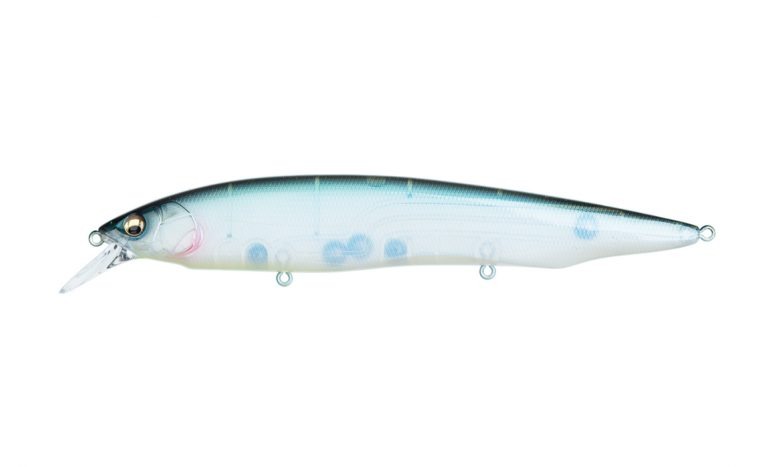
He was fishing in a confined area, with the rocky shoreline and the bank as natural barriers, and when the fish were “feeding up” Palaniuk would also use the water’s surface as a natural corral.
“When they pushed bait in there, as it got shallower it would force the bait up to the surface, so I’d try to mimic that. I’d change the rod angle and twitch upward. That makes the bait look like it’s about to get eaten – it’s the most natural thing in the world.”
When the fish would see the bait escaping, most of the time Palaniuk said they’d “hit another gear.” As the bait approached the surface he’d go back down with it “and that’s when the bite would happen.” It’s a tactic that’s not limited to the Kanata. He also uses it with smaller jerkbaits like the Vision Oneten and the ITO Shiner. The weight transfer system is key – it allows him to get the front end up enough that it kicks the weights toward the back when he changes the angle. Again, this plays not just on Okeechobee, but any time bass are feeding up in the water column.
Colors and Tackle
While he constantly adjusted his retrieves, Palaniuk experimented with different colors only sparingly. He went through several variations of the Kanata, but found that Kameyama Ghost Pearl was overall the most effective. For the Big-M 4.0, he started with PM Strike Chartreuse and said he “got lucky on the first try.” With the prototype, he experimented with bluegill shades, because “those colors seem to shine in tannic water.” Ultimately, Sexy French Pearl did most of the heavy lifting.
He threw the Big-M 4.0 on 15 pound test Seaguar Tatsu fluorocarbon, noting that it’s not a stretch to go up to 20, but 15 is the perfect balance of diving ability and action. He used 12 pound test Tatsu with the Kanata and the prototype IPX crankbait. That’s his “go-to mid-depth zone” line choice. There weren’t heavy obstacles or obstructions in the vicinity, which allowed him to play the fish deliberately.
Cranking Strategies cont.
Dig in with Brandon for an in-depth look at the art of “floating” crankbaits to trigger game-changing bites when it matters most. Discover the expert techniques that turn missed opportunities into trophy catches!

